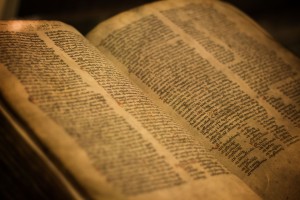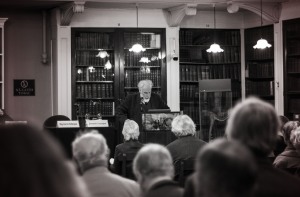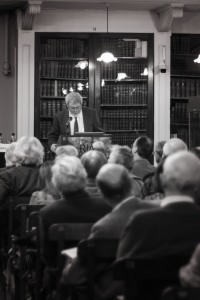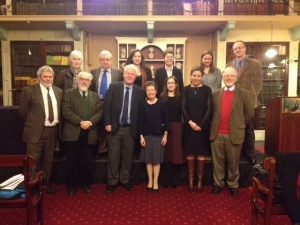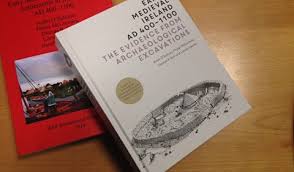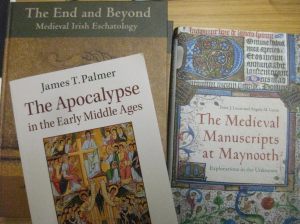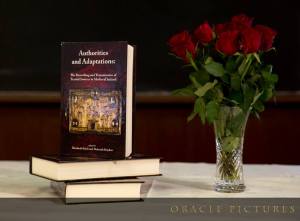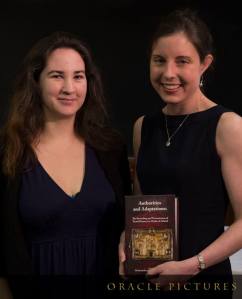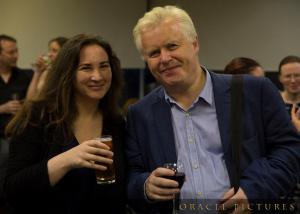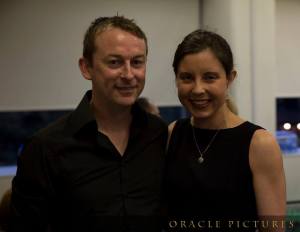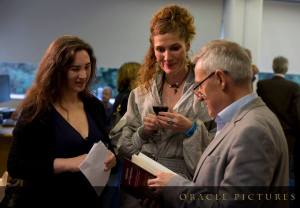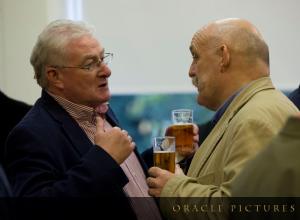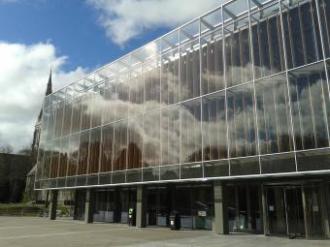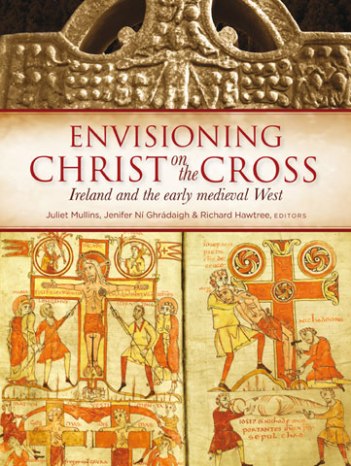This week, I have been reading the following short text with third year undergraduates in NUI Maynooth. I am not aware of any modern English translation of the text, so I thought it might be useful to make my own translation available here, along with a semi-diplomatic edition. There are many points of interest in this brief narrative, not least the fact that it is an Irish reworking of the ‘sword of Damocles’ anecdote. The language appears to be early Middle Irish (perhaps tenth or early eleventh century?).
N.B. The text is from the diplomatic edition (R. I. Best, et al., ed., Lebor na Nuachongbála, formerly the Book of Leinster, 6 vols (Dublin, 1954-83), V, lines 36278-36319). I have added capitalisation, punctuation and paragraph breaks to indicate my interpretation of the text. Expansion of abbreviations by Best, et al., is marked in italics; my own expansions or alterations are in square brackets. * is used to indicate the punctum delens over the preceding letter.
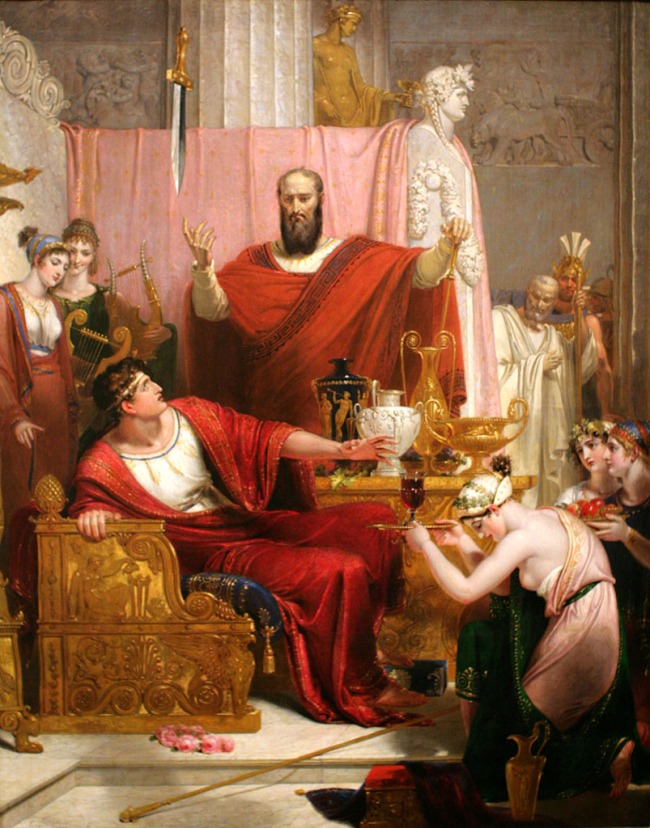
(Richard Westall, Sword of Damocles (1812), Ackland Museum, Chapel Hill, image from Wikimedia Commons)
Text
Ri irissech ro boí do Grecaib. Mór a thabartche 7 a dearc. Ond úair gabais flaithemnas nochon f*acces gen gáre fora beolu. Cia dobertais airfite in domain chuice. Epscop na f*arrad iss é ro boí i farrad a athar i flaithemnas. Doberedside im[murgu] affain*g n*dergóir cacha dige no ibed dond epscop. Nocho tabrad im[murgu] in gilla, acht cecha tabrad remi 7 iarum.
‘Maith’, or in t-epscop, ‘in*gnad imradimse formo menmain. Atusa .uii. m*bliadna it chomaitecht 7 ni erbart frit béus.’
‘Raidsiu’, or in rí, ‘is cet duit.’
‘Ni handsa. Ro buí remutsu sund t’athair féin. Fer amra. Ropo maith frimsa. Rop é a mathius frim conna ibed dig co tardad affain*g n*dergóir cecha hoendige dam. Tussu im[murgu] cidit maith from riam 7 iaram, noco tabrai dam a n-irdaltasin. 7 ni accim arbad messu do f*laithemnasu oldás flathius t’athar acht másu f*err cid etir do f*laithseo. Cid nossaira latsu iarum fo bíth is fír flatha con*geib na toirthe?’
‘Atbérsa fritsu ón. Is é mo dóchus[-s]a de. Rochuala niconro atlaigestar m’athairse a chuit riam acht ór dobered ara anmain. Messe im[murgu] dobérsa mo chobais o gabusa flaithemnas nicon esbiusa dig ríam nach atlaigind. Is suachnid di[diu] is ferr la Dia atlugud oldá ór. Sech dogensa in n-atlugud, rot biasu dano ind affain*g cacha dige no íbsa.’
‘Maith’, or in t-epscop, ‘7 anaill forácbusa cen rád fritso.’
‘Maith’, or in rí.
‘Is duit’, ar in clerech, ‘is lia cach coemna 7 cach airfitiud forsin talmain. Is in*gnad lenni nad accamar gen gári fordu déta ríam’.
‘Ní beraso dano din chursa’, or se.
‘Maith’, or in clerech.
Fecht and di[diu] ro buiseom .i. in rí fora dergud. A da maccóem fora bélaib. ‘Maith tra a datiucán’, or na maicc. ‘Is in*gnad lenni amal atá do s*ercso linni 7 ar sercni latso .i. naro thibisiu rinni riam. Dogenamni tra tromdacht fritso’, con-erbara la tabairt da lám imma bragit.
‘Maith’, or se. Tic cách issa tech. ‘Maith’, or in rí, ‘tabar slabrad forna gilla ucut.’
‘Cid so?’, or cách.
‘Niba adas a cóemna ros baiseom anallana. Ragait im[murgu] bás innossa. Tucthar crocha dóib.’
‘Is drochscél’, or cách, ‘na rrigdomnai 7 na maccáem do marbad.’
‘Bertar immach’, or in rí. Bertair. ‘Inba for crochad dogentar no far claidbed dogentar a gillu?’
‘Is ferr lind ar claidbed’, ol seat.
‘Gaibid claidbiu dóib’. Ro gabtha dá chlaideb uasa cind. ‘Na tabraidsi builli dóib co n-erborsa frib’, or se. ‘Maith a gillu in maith far menma lib innossa?’
‘Ni maith’, or in gillai.
‘Cid na tibid innossa?’
‘Ní accor lend’, or na gillai.
‘Is andsu a gillu in claideb fil uasmo chindsa: claideb Ríg na ndúile dia dáil im mullach anúas día ndernur uabur no esba. Ní tharddaidsi formsa iarum 7 ni rabaid oca chungid. Tailcid na gillu suas ni sirsan dóib a llott.’
Conid airesin di[diu] napo chóir do neoch uabur na hespa do denam, ar atá in claideb cétna os chind cach oen.
Translation
There once was a devout king of the Greeks. Great his bounty and his charity. From the time he assumed kingship there was not seen a smile of laughter on his mouth, even if the entertainers of the world were brought to him. The bishop who was with him, it was he who had been with his father in kingship.[1] The latter used to give to the bishop, moreover, a penny of red gold for every drink which he used to drink. The boy [i.e. the present king], however, used to give only what he gave otherwise.[2]
‘Well’, said the bishop. ‘It is a wondrous thing that I am pondering in my mind. I am for seven years in your company and I haven’t said it to you yet.’
‘Speak’, said the king. ‘You have permission.’
‘Alright then. Your own father was here before you. A wonderful man. He was good to me. Such was his goodness towards me that he used not to drink a drink without giving to me a penny of red gold for every drink. You, however, although you are good to me otherwise,[3] you do not give to me the equivalent of that. And I do not see that your kingship is worse than the kingship of your father; if anything, your kingship may be better. What exempts them [i.e. the pennies] in your opinion, since it is the sovereign’s truth which upholds the fruits?’
‘I’ll tell you that. This is my belief concerning it. I have heard that my father did not ever give thanks for his food, but it was gold that he used to give for his soul. I, however, will give my conscience [i.e. I swear] that since I assumed kingship I have not ever drunk a drink that I did not give thanks for. It is evident, then, that thanksgiving is preferable to God than gold. Not only will I perform thanksgiving but you also will have the penny for every drink I will drink.’
‘Well’, said the bishop, ‘and [there’s] another thing I haven’t mentioned to you.’[4]
‘Well?’, said the king.
‘It is you’, said the cleric, ‘who has more luxury and more entertainment than anyone else on earth.[5] We think it strange that we have not seen a smile of laughter on your face[6] ever.’
‘You won’t this time either’, he said.
‘Fine’, said the cleric.
One time, then, he, i.e. the king, was on his bed, his two dear boys[7] before him. ‘Well then, daddy,’[8] said the boys. ‘We think it strange, since we have love for you and you have love for us, that you have never smiled at us. We are going to persecute you until you tell us’, grabbing him by the neck.
‘Fine’, he said. Everyone comes in to the house. ‘Well’, said the king, ‘let a chain be put on those lads.’
‘What’s this?’, said everyone.
‘Not fitting was the pleasure that they had so far. They will die now. Let gallows be brought to them.’
‘It is a bad story’, said everyone, ‘killing the royal heirs and the dear boys.’
‘Let them be brought out’, said the king. They are brought out. ‘Will it be your hanging that will be done, or your being put to the sword that will be done, oh boys?’
‘We prefer to be put to the sword’, they said.
‘Take swords to them’. Two swords were brought above their heads. ‘Do not give a blow to them until I tell you’, he said. ‘Well, lads, is your mental state good now in your opinion?’
‘It is not good’, said the boys.
‘Why are you not smiling now?’
‘We don’t want to’, said the boys.
‘More difficult, oh boys, is the sword which is above my head, that is, the sword of the King of Creation, to be sent down into the crown of my head if I commit pride or wantonness. You are not to put it on me afterwards and you’re not to be seeking it.[9] Let the boys up: it would be unfortunate to destroy them.’
So that it is for that reason, then, that it is not proper for anyone to engage in pride or wantonness because the same sword is above everyone.
[1] i.e. when the father was king.
[2] literally: ‘what he gave before and after’, i.e. not the payment for drink, but all the other payments which the previous king used to give.
[3] again, literally ‘before and after’.
[4] literally: ‘which I have left without saying to you’.
[5] literally: ‘it is to you that every luxury and entertainment is most numerous on the earth’.
[6] literally: ‘on your teeth’.
[7] maccóem – ‘dear boys’, ‘young nobles’, ‘foster-sons’, ‘courtiers’ – see Proinsias Mac Cana, ‘Irish maccóem, Welsh makwyf’, Ériu 42 (1991), 27-36.
[8] Term of endearment, but can also be used by a foster-son to his foster-father, or by a student to his teacher.
[9] i.e. don’t provoke me into committing either of those sins.
